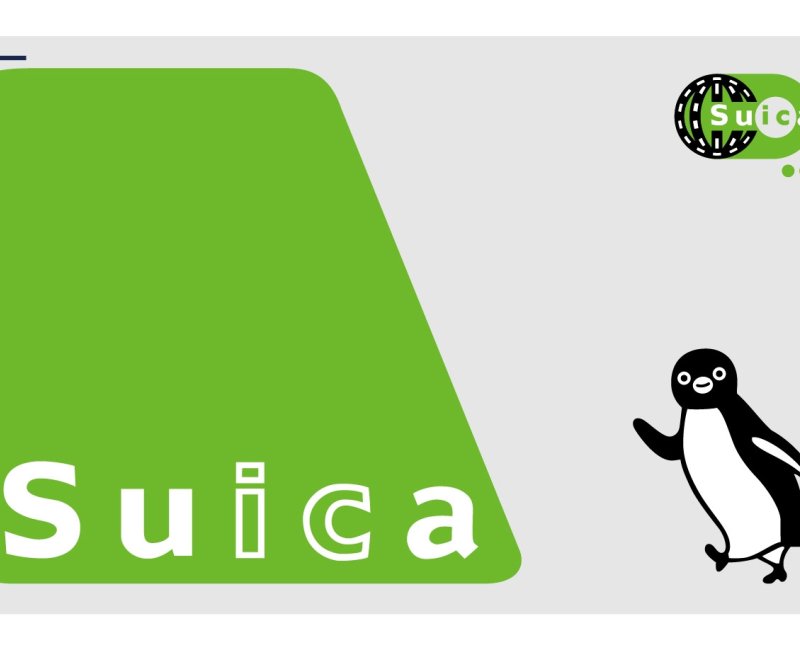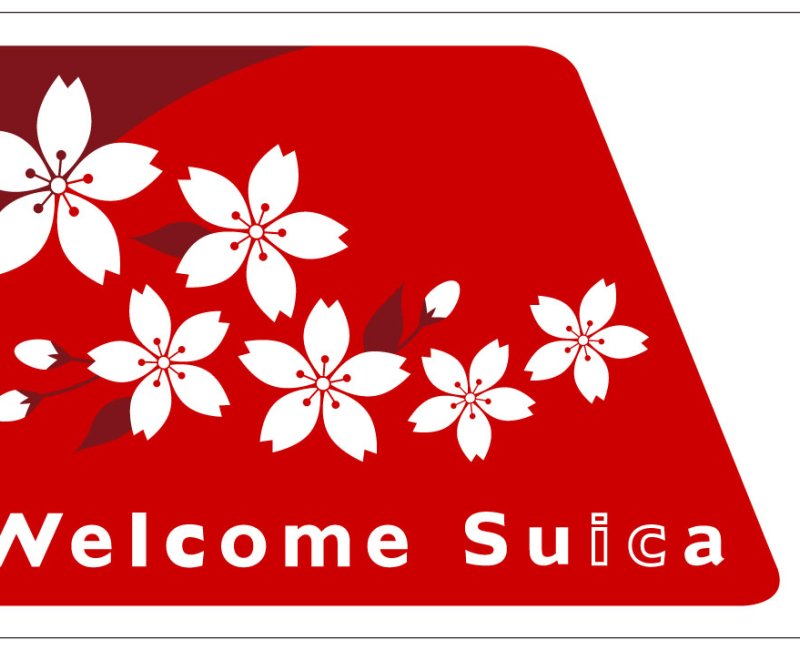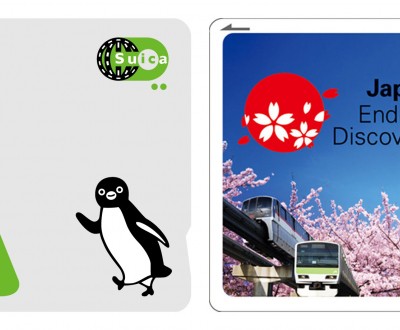The Suica Card: A Travel Essential in Japan
Suica is the name of an electronic prepaid card that allows an easy simple use of public transportation network in Japan as well as to pay at some shops and vending machines. The Suica system of virtual wallet is debited each time its holder uses it and help travel faster by metro, train or bus throughout the archipelago.
We have already mentioned the Suica in other various articles on Kanpai-Japan, as a useful complement to the Japan Rail Pass. This card has become such an essential item to any traveler in Japan that it seemed crucial to describe it in great length in an article. Suica was introduced in the early 2000’s, and at the same time we began traveling Japan we found out it was a necessary tool, but we came to realize not everybody was aware of how convenient it was.
Suica is a prepaid multiuse magnetic card (FeliCa IC technology by Sony) mainly used as a means of payment for transportation fees but also for small purchases in a great number of partner shops. In Japan, where 200 million IC cards have been issued as of 2021 (that is to say more than 150% of the total Japanese population!), and especially in urban areas, the prepaid card has become a real institution thanks to the time it saves and its convenience. It is an individual card (one card per holder), name registered when purchased in Japan, but not name specific when bought in advance from a registered travel agency.
The homophone スイカ suika means "watermelon," but the name of the card we are discussing here is the acronym for Super Urban Intelligent CArd. The initial intent was to facilitate the use of railway networks in greater Tokyo and the archipelago's other megalopoli. In Japan, the base for setting a regional train 🚅 or metro fare is almost systematically the distance. It means that when you buy an individual ticket, you must check the amount beforehand with maps that are only in Japanese and can be a jumble, to buy a ticket at the right amount. Not really flexible and hard to understand for foreigners...Furthermore, several companies can share the same networks and just buying a ticket can be a head-scratcher.
🚃 Operating the reloadable "pass"
The Suica card was established in November 2001 by the national railways company Japan Rail (more precisely JR East) to break free from those constraints with an electronic wallet: the card is swiped at the entrance gate of the departure station, and at the exit at the arrival station. Regardless of the train companies or number of trains used, the exact fee will automatically be debited from the card and displayed on the pay-gate's control screen.
Miscellaneous information about the Suica card:
- As often in Japan, cash is king and Suica makes no exception: you can only reload it with coins or bills, but not with a bank card.
- If you do not have enough credit on your card to pay the fee, you will have to reload it at a ticket vending machine to get out of the station.
- The maximum amount the card can contain is ¥20,000 (~US$127.73).
- If the card is lost, the amount cannot be refunded.
- Important: the Suica card cannot replace a JR Pass, but often comes as a complement.
It may happen that a bug or a technical malfunction prevents you from using the exit gate. No need to panic: Just go to the information desk and say ___から来ました ( ___ kara keemashta), which means "I'm coming from ___ ." For example, if you took the train/metro at Shibuya, say "Shibuya kara keemashta" and the station attendant will debit the fare from your card, whilst checking its condition.
However, it is not possible to enter and exit the same station (for example to cross it or hand it to someone) with the Suica. It will then be necessary to find the station attendants near the gates and pay ¥140 (~US$0.89).
Seasoned travelers in Japan appreciated the combined ticket "N'EX+Suica", but it is not on sale anymore since 2013, March 31. Moreover, the Narita Express fare cannot be paid by Suica, and buying a ticket is necessary.
Since 24 December 2014, the Suica card can be used on the bus network in Kyoto.

💴 Prices and discounts
Until August 1st, 2023, you could purchase the Suica upon arrival in Japan, at the airport or at one of the JR stations, such as stations on the Yamanote Line in Tokyo. Say スイカカードを買いたいです。(Suica caado o kaitaidess) which means "I want to buy a Suica card." It was also possible to buy the card at any time from a vending machine in the station.
The card costs ¥2,000 (~US$12.77) which includes a ¥500 (~US$3.19) deposit and gives you an immediately useable starting balance of ¥1,500 (~US$9.58). Use your card as you like and reload it when needed at any station where you can find a vending machine marked with the Suica logo.
Returning the card can only be made in the area where it was bought, meaning the greater Tokyo for Suica. The deposit and the remaining balance are then refunded, minus a ¥210 (~US$1.34) return fee. However, as the Suica can be used for a period up to ten years, you can keep it for your next trip to Japan.
Children can have their own Child card: the purchase price is the same, but each swipe cost half the usual price.
On a side note, the use of prepaid cards like Suica grants a small discount (about 5%) on most of transportation fares. Therefore, each trip cost a little bit less, which can be an additional advantage, especially if you use it a lot.
Since August 2, 2023, the classic Suica is no longer available anymore in Japan.
🏪 Suica, beyond Transportation
The prepaid card is considered essential in Japan because its usage is not limited to transportation. Beyond the metro where Western tourists mostly use it, Suica is a convenient method of payment for train tickets (on 52 lines throughout the country), buses, many vending machines, as well as a lot of small neighborhood shops like konbini and many restaurants.
The popularity of the Suica system has led to its adaptation to another must-have tool: The smartphone 📱. Most Japanese cell phones can now use the Suica function through the NFC protocol (contactless payment). This system is called "mobile-Suica" and turns phones into what is called saifu-keitai (財布携帯) in Japan, which literally means "Cell phone-wallet." Since 2016, October 25, Apple has implemented a Suica function on the iPhone (starting from version 7 only in Japan, then for all devices with iPhone 8 and X).
Even giants like Amazon and Nintendo have adopted Suica. For example, Wii U and New 3DS game consoles equipped with NFC accept payment by Suica and Pasmo. Even arcades increasingly accept payment by prepaid cards, especially since the successive rises of VAT in April 2014 and October 2019 on the ¥100 (~US$0.64) base fee.
JR does not forget its hobby collectors; frequent redesigns of its penguin mascot, special version releases, and limited editions either in time (mostly around special events) or in limited quantity. One of the most memorable was the special "Tokyo Station," with only 15,000 cards released on December 20, 2014. The design was so popular, with 1.7 million of orders in the following two months, that a reedition was announced!
🗾 The other pay-as-you-go cards: Pasmo, Icoca...
With its 42,1 million users, Suica is the most widely used card in Japan. But other cards are available in most city hubs throughout the country:
- Pasmo in Tokyo (22 million users) and its monthly subscription system by Tokyo Metro – for tourists, Pasmo’s use is quite similar to Suica’s;
- Icoca (7,7 million users) and PiTaPa for Kansai :Kyoto, Osaka, Nara region;
- Manaca (2,8 million users) and Toica for Nagoya and Tokai region;
- Hayakaken and Nimoca / Sugoca for Fukuoka and Kyushu island;
- Okica in Okinawa (to use only with the airport’s monorail from spring 2020);
- Kitaca for Hokkaido.
Before 2013, March 23, each card was only useable in their respective region and not compatible with one another. Now, each card works on every network (except in Hiroshima), making them more convenient and comfortable to use. It is now possible to pay transportation fees in 4,275 out of 9,000 stations in Japan, and even in more than 200,000 shops and restaurants throughout the country and climbing.

⚠️ Since June 2023: the Welcome Suica
At the end of 2019, a new (red) Suica dedicated to tourists was introduced, called the "Welcome Suica". It is slightly different from the ordinary Suica:
On June 8th, 2023 the JR East company announced that due to a shortage of semiconductors, the classic Suica can no longer be supplied anymore to travel agencies spanning the globe. The Pasmo card is also affected by this sales suspension. The cards retroactively purchased are valid and still usable, but it has become difficult to buy new ones.
Moreover, travelers who purchase their IC card in Japan have to provide personal information (name, gender and date of birth) now.
Since August 2, 2023, it is not possible to purchase an ordinary Suica or a Pasmo in Japan anymore. As for the Welcome Suica, the stocks are also very limited and it is currently only purchasable at Narita and Haneda airports.
Once the last of the classical Suica stocks run out, tourists will have to buy the Welcome Suica, with a special attention on its expiry date (displayed on the paper receipt) at the time of purchase.

